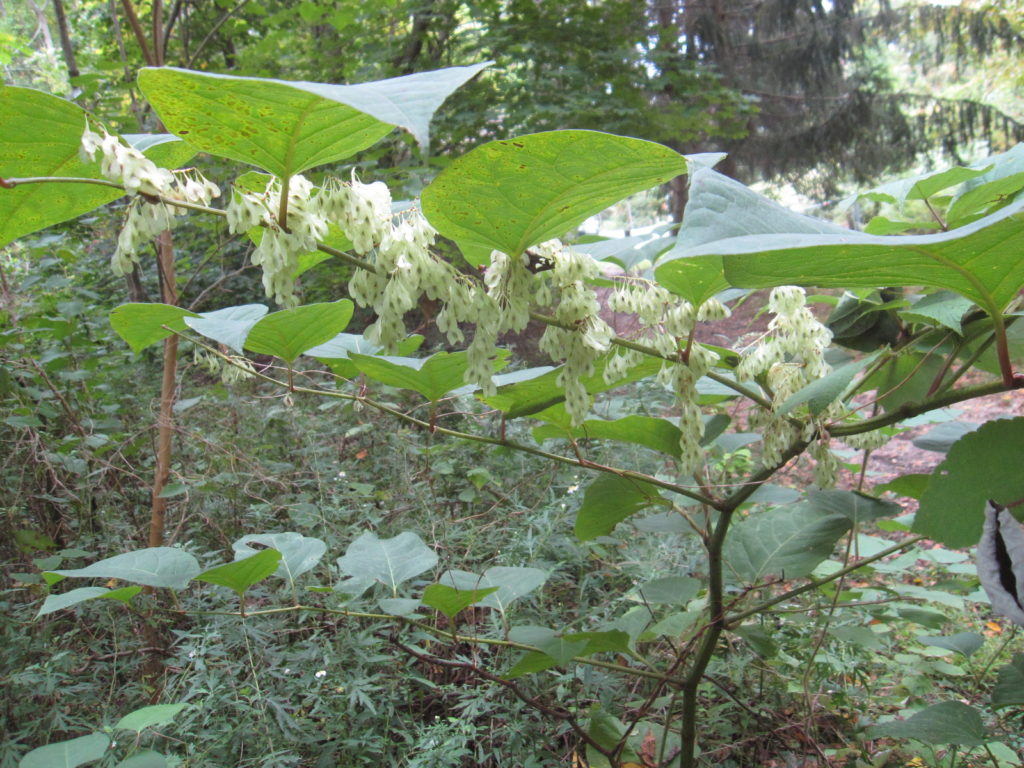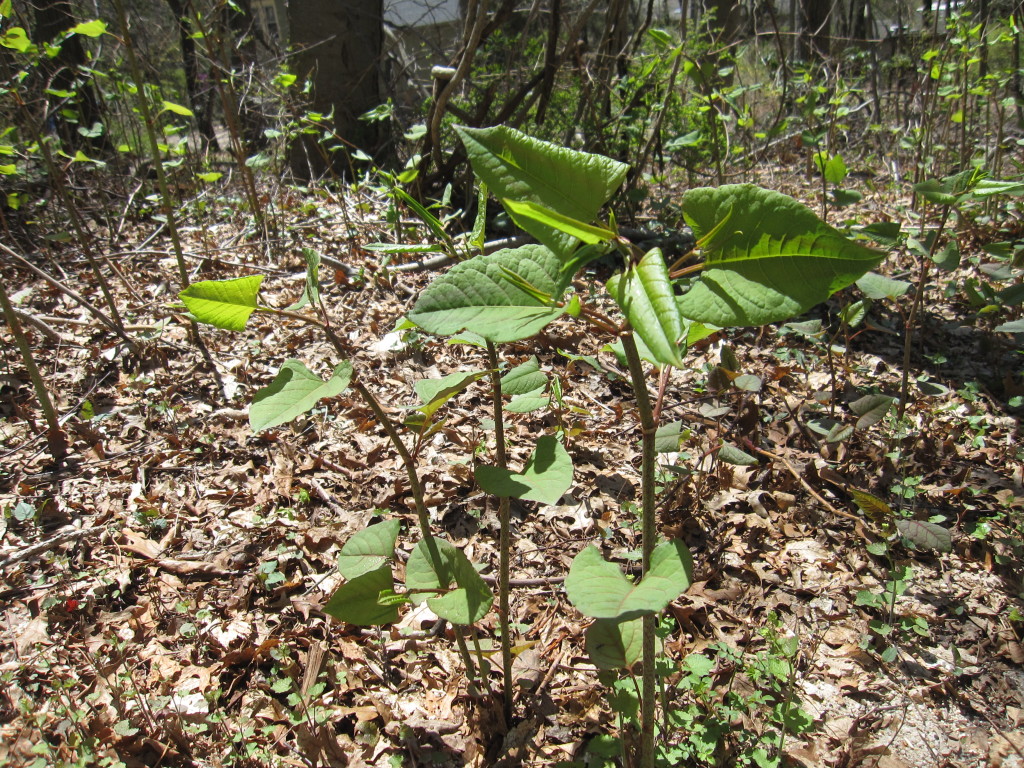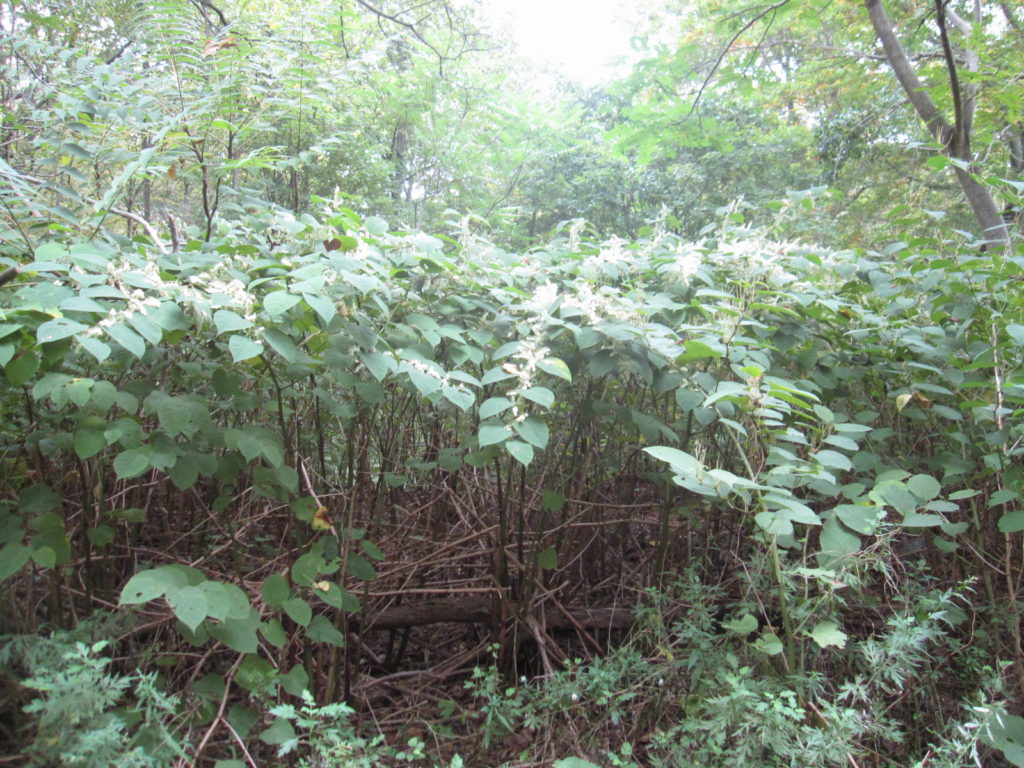Hover over images for detail:

Japanese knotweed is a perennial forb, and is invasive. The stems are smooth, stout, and swollen at joints — resembling bamboo — where the six-inch leaf meets the stem. Leaves are oval to somewhat triangular and pointed at the tip. This shrubby plant can grow to over 10 feet tall. Small white sprays of flowers occur in summer, followed by small winged fruits (seeds) in autumn. Japanese knotweed seedlings are edible. According to Wildman Steve Brill, “You can eat Japanese knotweed shoots from mid-April to early May, before the plant gets tough and woody.”

Juvenile plants can be uprooted with a hand-digging tool. But if the stem breaks off from the root, with the root remaining in the ground, the plant will regrow. To remove mature Japanese knotweed, use a shovel or a Pulaski tool to dig out the entire plant, including roots and rhizomes. Since any portion of the root system that is not removed will potentially re-sprout, be prepared to remove it repeatedly during the growing season until the plant has exhausted its reserves. It is also likely that in the process of disturbing the soil, new seeds will germinate new plants.

An alternate method for removing Japanese knotweed is to wait until August or just before blooming, when the root is at its weakest and the stem doesn’t crush under pressure. Then uproot each plant with a weed wrench (alternatives to weed wrenches are available online). All plant parts and seeds should be bagged, solarized, and disposed of to prevent them from reestablishing.
Check out Invasive Herbs for additional information.
